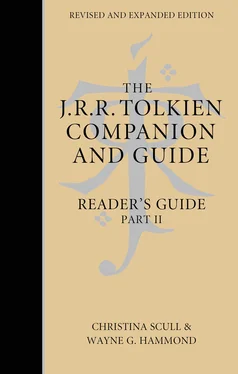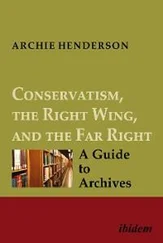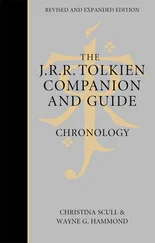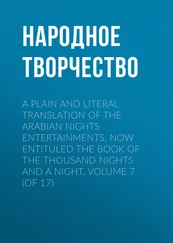The Númenóreans who escape this disaster by sailing to Middle-earth become lords and kings of men. Many still seek in vain to prolong life, but manage only to preserve the bodies of the dead. Their descendants preserve a confused memory of a land in the West ruled by the Gods, to which the dead might come. From this arises a custom among those who dwell on the west coast of Middle-earth of placing their dead on ships and sending them out to sea. Some Númenóreans are able to see, or partly see, a path or bridge rising above the world and leading to the True West; but when they try to find this path they succeed only in sailing around the world. Only the Elves are still able to reach Valinor along the Straight Road.
Amroth, who had continued to honour the Valar, is one of those who escape the destruction of Númenor. He becomes a king in Middle-earth and allies with Elrond, son of Eärendel, and with Elves who had stayed in Middle-earth in an attack on Thû’s fortress. Although they are victorious, Amroth is slain. Thû is driven out and flees to a dark forest.
Having established this history, Tolkien was able to begin to write The Lost Road . The first two chapters, set in more or less contemporary *Cornwall, introduce the main protagonist, Alboin Errol, who from boyhood has heard in his dreams echoes of strange languages, which he calls Eressëan or Elf-latin and Beleriandic, including a passage in Eressëan describing the downfall of Númenor. He finds himself suddenly declaring that some dark clouds ‘look like the eagles of the Lords of the West coming upon Númenor’. Then Elendil of Númenor appears to him and offers him the chance to go back in time, if he takes his son with him. (These two chapters are described at greater length in our article on * The Lost Road .)
The two Númenórean chapters take place forty-four years after the arrival of Sauron (now so named) in Númenor. Elendil (replacing Amroth) is the leader of a party faithful to the old ways and beliefs, while his son, Herendil, has been half won over to the opinion of those supporting Sauron. The kings of Númenor are now descended from Eärendel, and the last king, Tarkalion, in his pride, summons Sauron to Númenor, demanding homage from him. Elendil, who is trying to persuade Herendil to his own point of view, says that men now covet the lands of others, influenced by Sauron; they build metal-clad ships, strong fortresses, and many weapons. Those who displease the king disappear, and there are spies, prisons, torments, and evil rites. Sauron has built a temple to Morgoth on the mountain holy to Ilúvatar, and is encouraging the Númenóreans to abandon the Elvish Eressëan language and revive the ancestral speech of Men. Elendil foresees that Sauron will encourage the ageing king to invade Valinor in a useless bid for immortality. He asks his son to choose between his father and Sauron, and with Herendil’s choice for his father the narrative ends.
The picture Tolkien draws of Númenor under the influence of Sauron, a once great nation in decay, almost certainly owes something to then-current events in Nazi Germany. Christopher Tolkien comments:
From Elendil’s words at the end of The Lost Road there emerges a sinister picture: the withdrawal of the besotted and aging king from the public view, the unexpected disappearance of people unpopular with the ‘government’, informers, prisons, torture, secrecy, fear of the night; propaganda in the form of the ‘rewriting of history’ …; the multiplication of weapons of war, the purpose of which is concealed but guessed at; and behind all the dreadful figure of Sauron …. Moreover, Númenor is seen by the young as over-populous, boring, ‘over-known’ …; and this cause of discontent is used, it seems, by Sauron to further the policy of ‘imperial’ expansion and ambition that he presses on the king. When at this time my father reached back to the world of the first man to bear the name ‘Elf-friend’ he found there an image of what he most condemned and feared in his own. [ The Lost Road and Other Writings , p. 77]
The second version of The Fall of Númenor probably followed, or was contemporary with, the writing of The Lost Road , for it includes details introduced in that work. Elrond, son of Eärendel, is now named as the first ruler of Númenor. The Númenóreans adopt the speech of the Elves of the Blessed Realm and Tol Eressëa. Elendil, who escapes the downfall, becomes a king in Beleriand and allies with Gil-galad, the Elf-king, against Sauron, whose stronghold, Mordor, is now named. Although Sauron is overthrown, both Elendil and Gil-galad are slain. A later addition states that Tol Eressëa as well as Valinor is removed from the world.
On 15 November 1937 Tolkien submitted the unfinished manuscript of the * Quenta Silmarillion to George Allen & Unwin (*Publishers). In the following month, while the work was being considered, he leaped ahead in it and wrote an account of the end of the First Age which includes information relevant to the story of Númenor. Eärendel now has two sons who are allowed by Manwë to choose freely whether to be accounted among the immortal Elves or mortal Mankind. One son, Elrond, chooses to be of Elf-kind but remains in Middle-earth rather than accompany the Elves returning into the West; but the other, Elros, chooses the fate of Men. At some time after this, in an amanuensis typescript of the second version of The Fall of Númenor , Tolkien substituted Elros for Elrond as the first king of that realm.
THE LORD OF THE RINGS
Further developments in the Númenor story occurred intermittently during the writing of The Lord of the Rings as it began to play an increasingly important role in the internal history of that work, and finally as an essential strand. Tolkien began to write The Lord of the Rings in December 1937, but it was some time before he developed the Necromancer of The Hobbit into the maker of the One Ring – Sauron, the servant of Melkor in the First Age, who was responsible for the destruction of Númenor near the end of the Second. It was not until late summer and early autumn 1938 that relevant allusions began to appear in the text: Trotter (the precursor of Aragorn) remarks of land the company is passing through that evil people once lived there, who ‘came under the sway of the Dark Lord. It is said that they were overthrown by Elendil, as King of Western Men, who aided Gilgalad, when they made war on the Dark Lord’ (* The Return of the Shadow , pp. 192–3). The idea emerged that Bilbo’s ring is more powerful than other rings, and that it was ‘taken from the Lord [Sauron] himself when Gilgalad wrestled with him, and taken by a flying Elf’ ( The Return of the Shadow , p. 226). The ‘flying Elf’ was soon replaced by Isildur, son of Elendil, who cuts the One Ring from Sauron’s hand but then loses it in the river Anduin when he is attacked. Tolkien also considered making the Rangers ‘the last remnant of the kingly people from beyond the Seas’ ( The Return of the Shadow , p. 331).
In autumn 1939 the Númenórean realms in exile began to emerge with the mention of Ond (later Ondor > Gondor ) in early versions of the Council of Elrond (bk. II, ch. 2). Trotter becomes a man rather than a hobbit, described in Gandalf’s letter to Frodo as ‘Aragorn son of Celegorn, of the line of Isildur Elendil’s son’ (* The Treason of Isengard , p. 50). Eventually Aragorn becomes the last descendant of Elendil and the rightful heir to the realms Elendil founded. Tolkien tried out several ideas for the establishment and early history of these realms before he was satisfied. The story that eventually emerged was that Elendil the Tall and his sons Isildur and Anárion sailed first to the North, where they were befriended by Gilgalad and Elendil established the kingdom of Arnor. His sons then sailed south and founded the realm of Gondor, close to Mordor. When Sauron attacks and takes Isildur’s city, Minas Ithil, Isildur joins his father in the North, and Elendil and Gilgalad form the Last Alliance against Sauron.
Читать дальше












